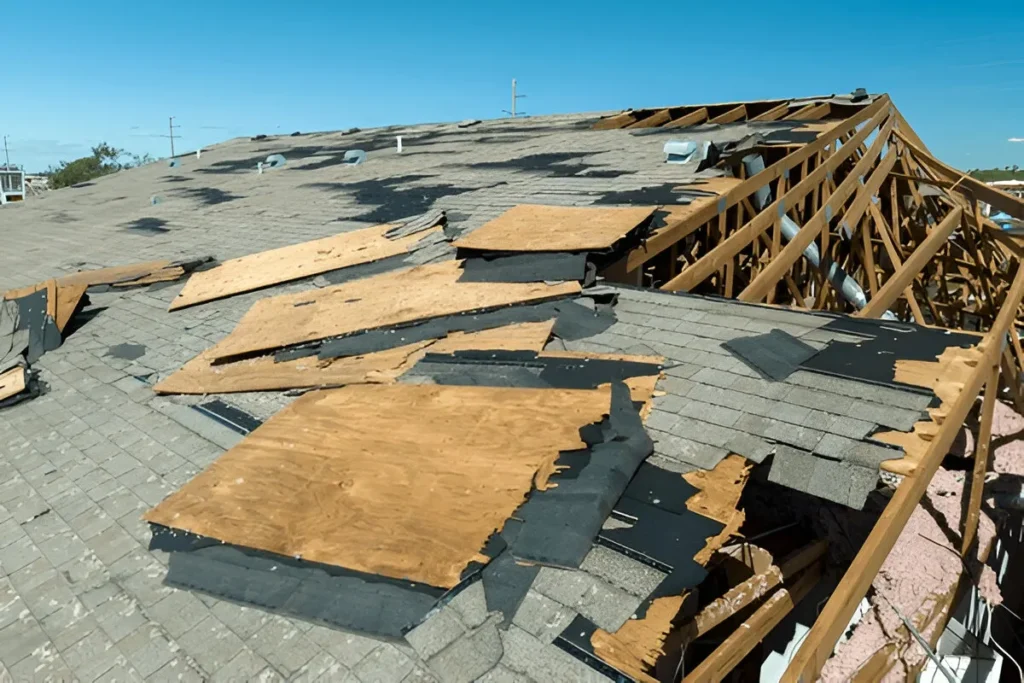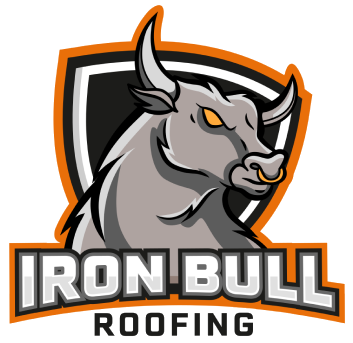Hail Damage Roof
When the Sky Attacks: Spotting Hail Damage Roof Before It’s Too Late
Hailstorms can transform a peaceful afternoon into a homeowner’s worst nightmare. While you’re safe inside, your roof bears the full brunt of nature’s icy assault. What starts as a few minutes of pelting ice can result in thousands of dollars in damage—damage that often goes unnoticed until it’s too late.
Understanding how to identify hail damage roof early can save you from costly repairs, insurance headaches, and the stress of dealing with water damage inside your home. This comprehensive guide will help you recognize the warning signs, understand your options, and take the right steps to protect your investment.
Whether you’re dealing with fresh storm damage or suspect your roof has been quietly compromised, knowing what to look for and when to call professionals can make all the difference in preserving your home’s integrity and your peace of mind.
Understanding Hail Damage
From Ice to Impact
Hail forms when raindrops are carried upward by strong storm updrafts into extremely cold areas of the atmosphere, where they freeze into ice pellets. These frozen projectiles can grow larger as they’re repeatedly lifted and dropped within the storm system. When they finally fall, they can reach speeds of up to 100 mph, creating significant impact force that can damage even the most durable roofing materials.
Material Vulnerability
Different roofing materials respond uniquely to hail impact. Asphalt shingles may show bruising, granule loss, or cracking, while metal roofs typically display denting patterns. Clay and concrete tiles are particularly vulnerable to cracking and breaking, especially when struck by larger hailstones.
Hidden Harm
The most dangerous aspect of hail damage is its ability to remain hidden from casual observation. While some damage appears immediately as obvious cracks or dents, other impacts may only weaken the material’s protective properties without visible surface changes.

Hail Damage Roof Issue
Common Signs of Hail Damage on Roofs
Visual Clues
The most apparent signs of hail damage include visible dents in metal components, bruised or cracked shingles, and damaged flashing around vents and chimneys. Look for circular patterns of damage, split shingles with sharp corners, and exposed mat or substrate where the protective surface has been compromised.
Granule Loss
Granule loss represents one of the most common yet overlooked forms of hail damage. These protective granules shield the underlying asphalt from UV rays and weathering. When hail strips away these granules, it leaves dark spots or patches where the substrate is exposed.
Indoor Symptoms
Interior signs of roof hail damage issue often manifest as water stains on ceilings or walls, particularly after subsequent rain events. You might notice new leaks, dampness in attic spaces, or unexplained moisture issues. These indoor symptoms indicate that hail has compromised your roof’s water barrier, allowing moisture penetration that can lead to mold growth, structural damage, and costly interior repairs.
Why Ignoring Hail Damage is a Costly Mistake
Small Damage, Big Problems
What appears as minor hail damage can quickly escalate into significant structural issues. Small punctures or cracks allow water infiltration that can damage decking, insulation, and interior components. A single compromised shingle can lead to extensive water damage affecting multiple rooms, electrical systems, and personal belongings, turning a manageable repair into a major restoration project.
Energy Efficiency Impact: How a compromised roof raises utility bills
Hail damage can significantly impact your home’s energy efficiency by creating gaps, cracks, or compromised insulation. Damaged roofing allows conditioned air to escape and outside air to infiltrate, forcing your HVAC system to work harder to maintain comfortable temperatures.
Insurance Headaches
Insurance companies typically require prompt notification and documentation of storm damage. Delaying repairs or failing to address hail damage quickly can complicate claims processing and potentially result in denied coverage.
DIY vs. Professional Roof Inspections
The Safe Checklist
Homeowners can safely identify several signs of hail damage without climbing onto the roof. From ground level, look for damaged gutters, dented flashing, granules in gutters or around the foundation, and obvious shingle damage visible from your yard. Use binoculars to examine higher areas and check for patterns of damage that suggest hail impact rather than normal wear.
When to Call Experts
Professional inspection becomes necessary when damage isn’t clearly visible from the ground, when you’re unsure about the extent of damage, or when insurance documentation is required. Roofing professionals have the training and equipment to safely access all roof areas and identify subtle damage that untrained eyes might miss.
Avoiding Risk
Climbing on a hail-damaged roof problem presents serious safety risks, as damaged materials may be unstable or slippery. Hail can weaken structural components, making previously safe areas hazardous. Additionally, walking on damaged shingles can cause further harm, potentially voiding insurance coverage or creating liability issues.

Hail Damage Roof Problem
Insurance and Hail Damage Claims
Policy Basics
Most homeowners’ insurance policies cover hail damage as a covered peril, typically including roof repairs, replacement costs, and associated damages like water infiltration. Coverage usually extends to the full replacement cost of damaged materials, minus your deductible.
Documentation Tips
Proper documentation is crucial for successful insurance claims. Take detailed photographs of all damage from multiple angles, including close-ups and wide shots showing the overall affected area. Document the date and time of the storm, and maintain records of all communications with your insurance company.
Claim Pitfalls
Common mistakes include failing to report damage promptly, inadequate documentation, accepting the first settlement offer without proper evaluation, and attempting repairs before getting insurance approval. Some homeowners also make the error of not understanding their policy coverage limits or failing to include all damaged items in their claim, resulting in incomplete compensation for their losses.
Repairing vs. Replacing a Hail-Damaged Roof
Patch Jobs
Limited hail damage affecting only a small percentage of the roof may be repairable through targeted fixes. Individual shingle roof replacement, flashing repair, or minor granule touch-ups can address isolated damage effectively. However, repairs are only viable when the majority of the roof remains structurally sound and when matching materials are available to maintain a consistent appearance.
Full Replacement Needs
Complete roof replacement becomes necessary when hail damage affects more than 25-30% of the roof surface, when structural damage is present, or when the existing roof was already near the end of its useful life. Extensive granule loss, multiple layers of damage, or compromised decking typically require full replacement to ensure long-term protection and maintain warranty coverage.
Cost Considerations
While repairs may seem cost-effective initially, they can be more expensive long-term if damage is more extensive than initially apparent. Full replacement provides the opportunity to upgrade materials, improve energy efficiency, and reset warranty coverage. Consider factors like the roof’s age, extent of damage, and potential for future problems when deciding between repair and replacement options.
The Role of Iron Bull Roofing in Hail Damage Solutions
Expert Eyes
Iron Bull Roofing’s experienced professionals conduct comprehensive inspections that identify both obvious and subtle hail damage. Our trained technicians understand how different roofing materials respond to hail impact and can spot problems that might be missed by untrained observers.
Trusted Repairs: Using quality materials for lasting fixes
Our commitment to quality extends beyond initial installation to encompass all repair work. Iron Bull Roofing uses premium materials that meet or exceed manufacturer specifications, ensuring repairs blend seamlessly with existing roofing and provide long-lasting protection.
Peace of Mind
Iron Bull Roofing provides comprehensive support throughout the insurance claim process, from initial damage assessment to final project completion. Our team helps document damage, communicates with insurance adjusters, and ensures all repairs meet industry standards and insurance requirements.

Hail Damage Roof
Preventative Measures for Future Storms
Impact-Resistant Materials
Impact-resistant roofing materials offer superior protection against future hail damage. Class 4 impact-rated shingles, reinforced metal roofing, and advanced synthetic materials can withstand larger hailstones with minimal damage. While these materials may cost more initially, they often qualify for insurance discounts and provide better long-term protection, potentially saving money over the roof’s lifetime.
Regular Maintenance
Preventative maintenance helps ensure your roof can withstand severe weather events. Regular inspections, prompt repair of minor issues, gutter cleaning, and proper ventilation maintenance keep your roofing system in optimal condition. A well-maintained roof is more likely to survive hail storms with minimal damage and provides better protection for your home’s interior.
Emergency Preparedness
Develop an action plan for post-storm response, including immediate safety assessments, temporary leak mitigation, and prompt professional inspection scheduling. Keep contact information for trusted roofing professionals readily available, and understand your insurance policy requirements for prompt reporting. Quick response can minimize damage and streamline the recovery process.
Taking Action Protects Your Investment
Hailstorms may be unpredictable, but your response doesn’t have to be. Recognizing the signs of hail damage and taking swift action protects your home’s structural integrity and preserves its value. The difference between minor repairs and major reconstruction often comes down to early detection and prompt professional intervention.
Smart homeowners understand that hail damage roof maintenance and storm damage assessment are investments in long-term property protection. By working with experienced professionals like Iron Bull Roofing, you ensure that your roof receives the expert attention it deserves, from initial inspection through final repair.
Don’t let the next hailstorm catch you unprepared. With proper knowledge, professional support, and proactive maintenance, your roof can weather whatever nature brings and continue protecting what matters most—your family and your home.
https://www.google.com/maps?cid=1166087704919324729
